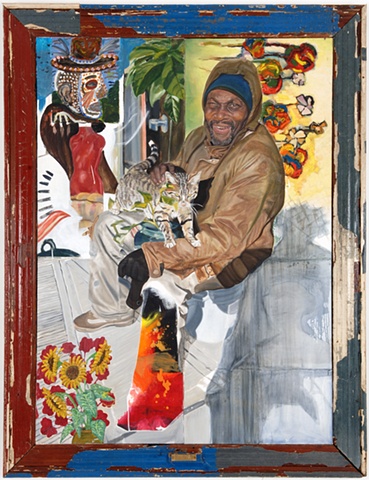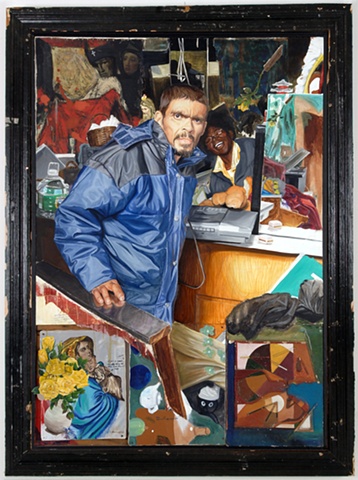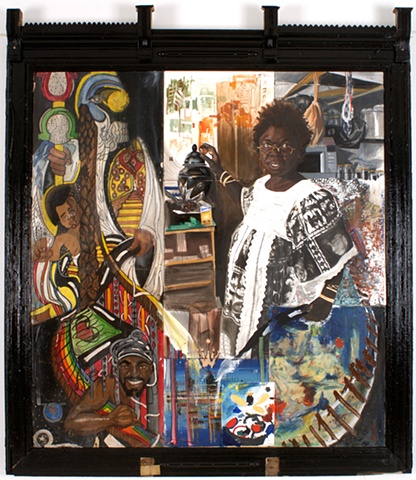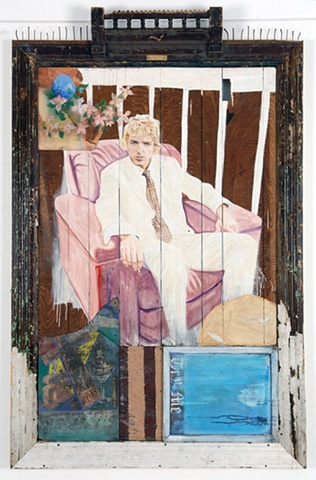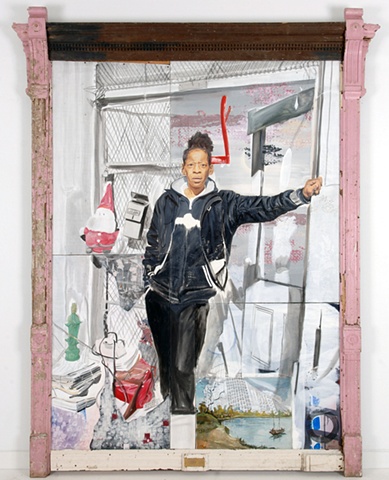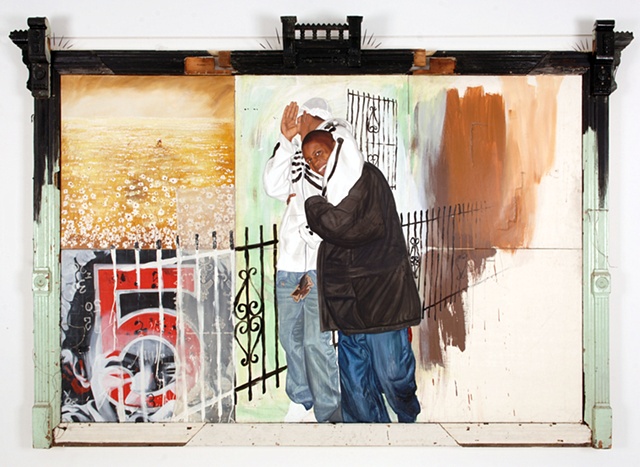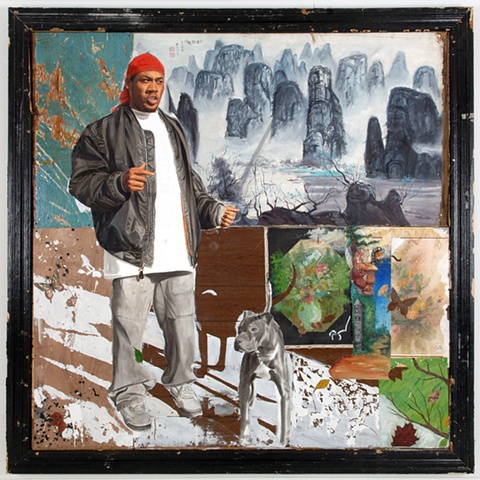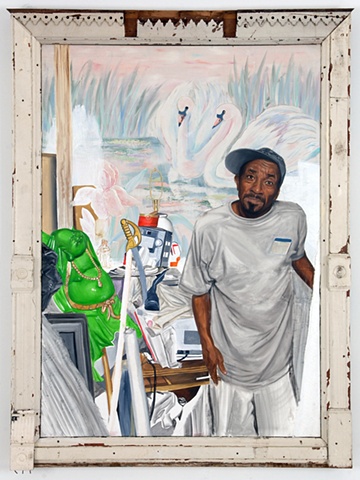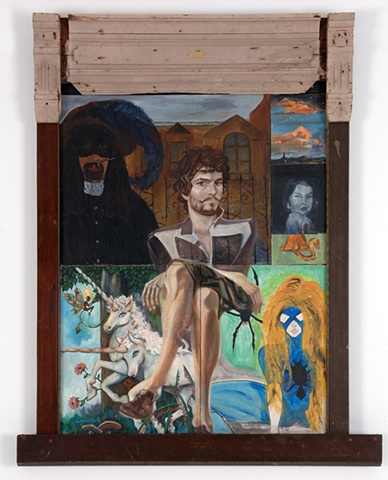PORTRAITS MADE IN DARKSIDE
The Darkside Portraits were made during the artist's two year residency inside of a derelict building in East New York City(i.e.. old cemetery building, crack house, underground hub for ritual Santaria). During this time he painted his fellow residents and made the critical repairs to the building needed for their winter survival. Often piecing and patching found materials together to make windows, floors, roof, and doors. All the while using a similar constructive process as used to make the paintings seen here.
The technique employed to make this work is of Gortner's own invention. Several smaller works of art (several canvases, panels, and original works of art made by other people) have been constructed together to form the paintings support both in content and structure. Sections of the flushed out surface are painted over, creating some new content while leaving some original content intact. Each work has been framed with cracked and chipped, antique doorway molding found in Darkside. The working process as well as the space surrounding his project was intended allegory for the collective and transformative power of art.

